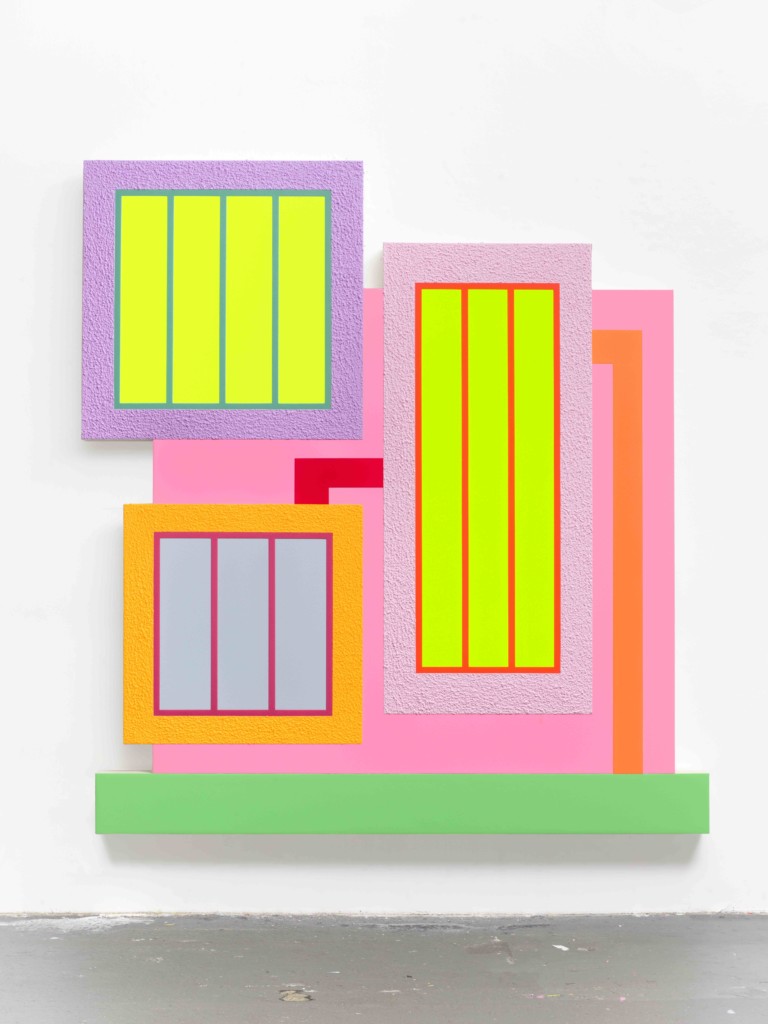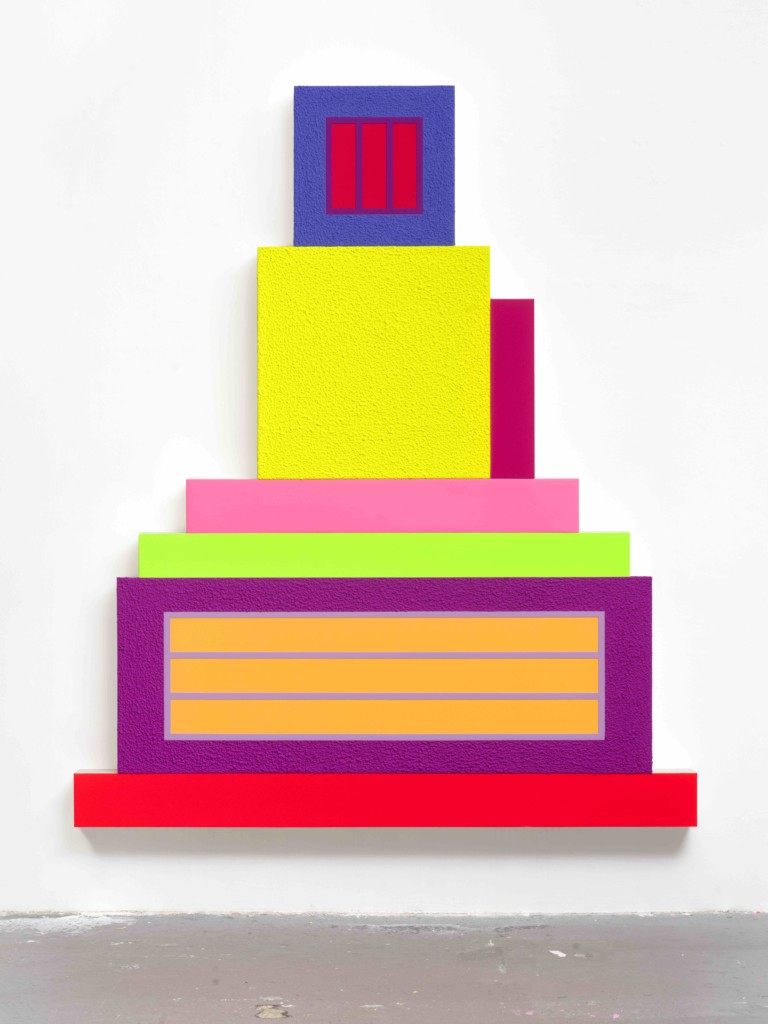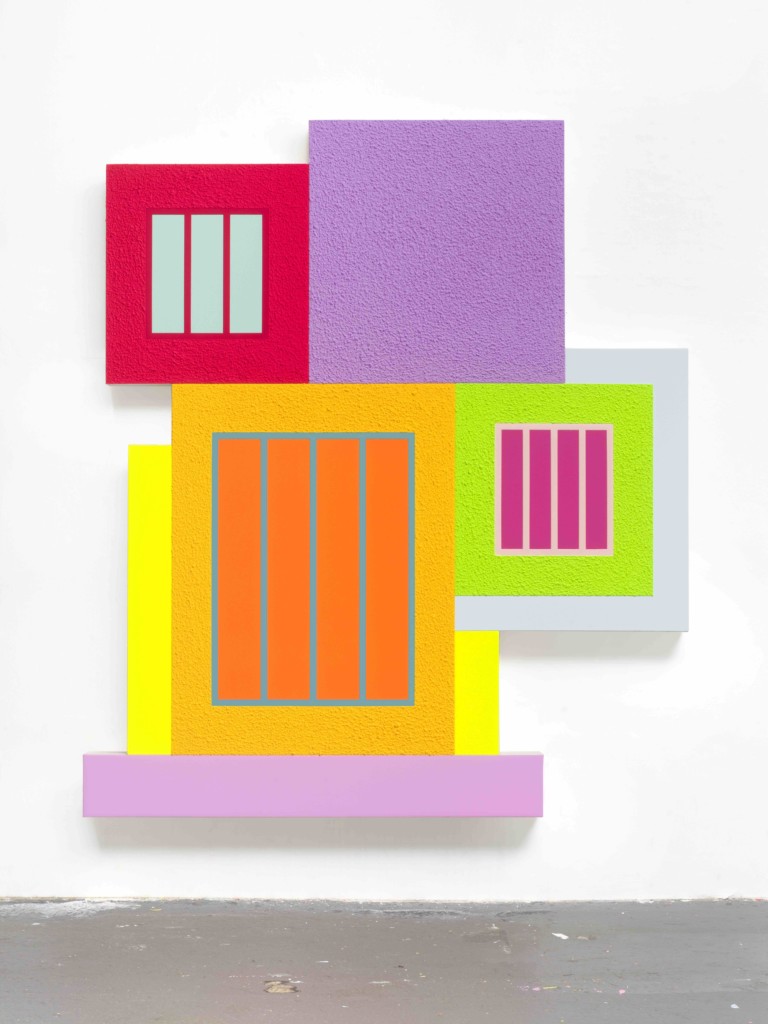- No products in the cart.
Peter Halley, “New Paintings”

Check the price list here
After 28 years collaborating with Galeria SENDA, and on the occasion of Barcelona Gallery Weekend 2020, Peter Halley returns to Barcelona with the exhibition New Paintings, to present new works on canvas. In this new series, the iconic “cells” or “prisons” connected by circuits, expand to shape the canvas. Halley thus introduces an important compositional novelty in his work – an imaginary created in the early 1980s that echoes in most of his artistic corpus.
The colour palette of this new series also manifests a significant change. With an abundance of fluorescent yellow, violets and, above all, pinks (clear, warm and intense), Halley’s compositions become particularly luminous. There is no lack of different layers of preparation to give consistency and depth to the pictorial surface, as well as the use of “Roll-A-Tex”, a lumpy commercial paint, very popular in the 70s and 80s for home decoration, which has accompanied the artist for decades. With this, Halley creates contrasts of textures and reliefs between the compositional elements and combines the industrial and urban register with the sensuality of a tactile experience.
Peter Halley became known in the mid-eighties in New York as the driving force behind Neo-conceptualism, a current that appears as a reaction to Neo-Impressionism and which represents a resurgence of geometric abstraction. His style reflects the idea of language as a stable and self-referential system, and criticizes the transcendental claims of minimalism. Furthermore, his work is influenced by the social theory of Structuralism, which proposes the analysis of socio-cultural systems and languages, based on deep symbolic configurations and structures that condition and determine everything that occurs in human activity. «In our culture, geometry is usually considered a sign of the rational. I, for whatever reason, that idea is reversed, and geometry, has a primarily psychological rather than intellectual significance», he states in his essay “Geometry and the Social” of 1991.

Thus, the cells and conducts that Peter Halley articulates and combines in his canvases are not a simple abstract geometric composition, but rather a symbolic image of the social schemes that surround us. In this way, the turning point in the format that Halley presents in the exhibition New Paintings in Senda Gallery also reflects a turn in his analysis of the models of organization and communication in contemporary societies.
Examining these new works, it can be seen that these cells no longer fit into the regular structure of the canvas, but rather – as a metaphor for today’s society – establish a different relationship with it. Opting for free and open forms, the cells impose their own designs, challenging the rectangular and immobile structure of the traditional canvas. The irregular compositions that result from these formal searches by Peter Halley, although rigorously balanced and harmonious, seem to describe the profound changes in society in the digital era, as well as in the system of cognitive work. Thus, through an internal metamorphosis in Halley’s iconic visual language, the American artist’s pictorial discourse echoes the flow of information generated by the new technologies, as well as the new communication regimes, usually dominated by the younger generation.

Escritos sobre arte (Senda Ensayo, 2020), the volume to be presented in the context of Peter Halley’s New Paintings exhibition is the first Spanish translation of the most innovative and personal essays written by Halley from 1981 to 2001. While offering a critical view of the changes affecting the field of art and culture in the period of so-called “post-modernity”, these texts offer a different approach to Peter Halley’s experience and his exquisite intellectual work.

Peter Halley (New York, 1953) is one of the most influential artists of the international scene. He became known in the mid-eighties as a promoter of the so-called Neo-geo movement. Although he uses geometry as the fundamental iconographic repertoire of his works, he also insists on his figurative reference – a reference to the space and time of our society, its political and social spheres, or to the closed symbolic orders we live in. In this way, his cold and rectilinear shapes are a visual expression of our complex urban landscape: rectangular cells connected by networks of conduits, prisons, diagrams, isolated organisms. His iconic Roll-a-tex texture and the expressive use of colours also establishes affiliations with Pop Art, the digital economy and mass culture.
























































































